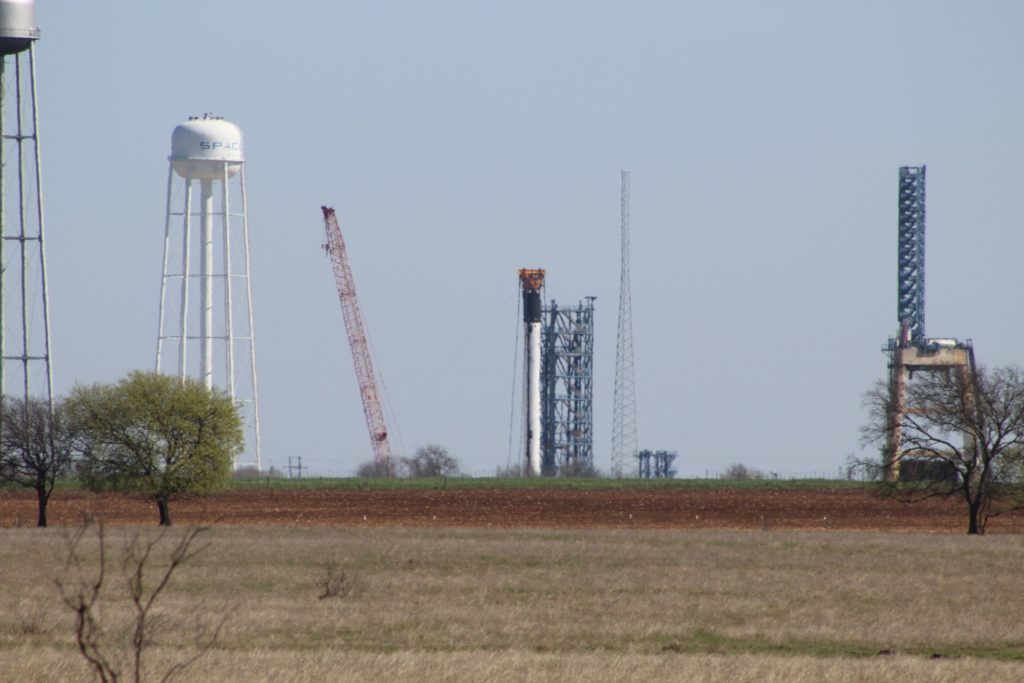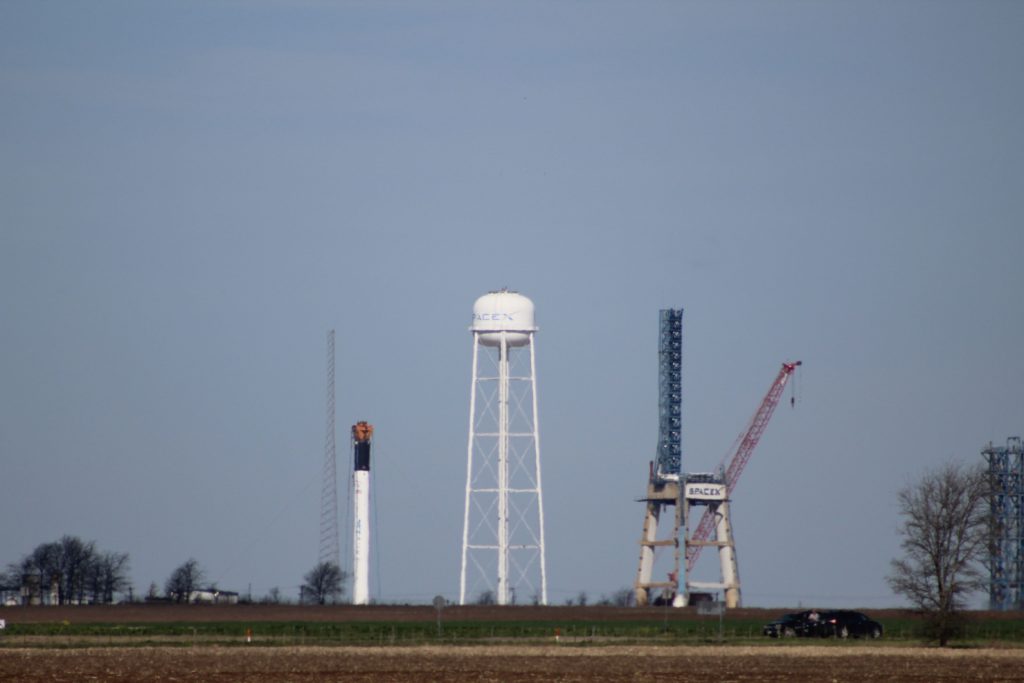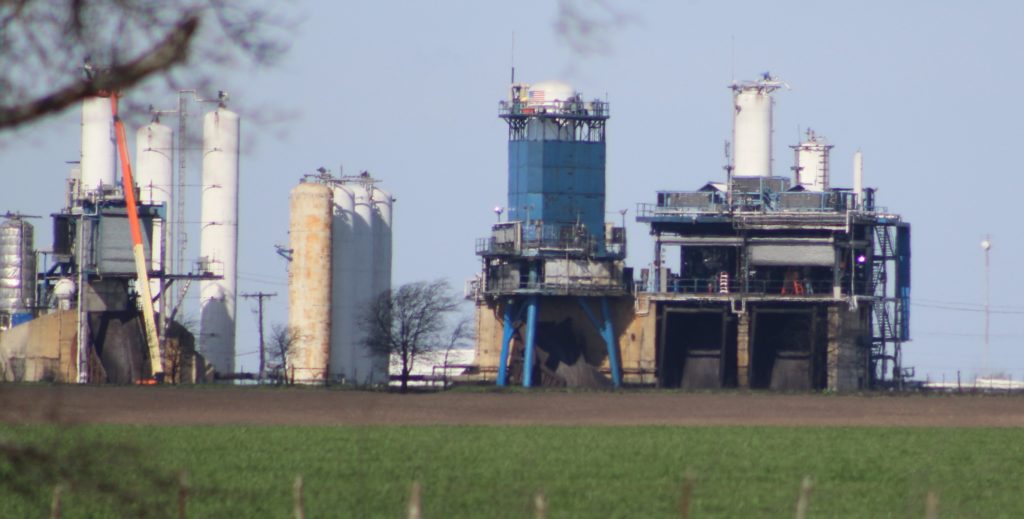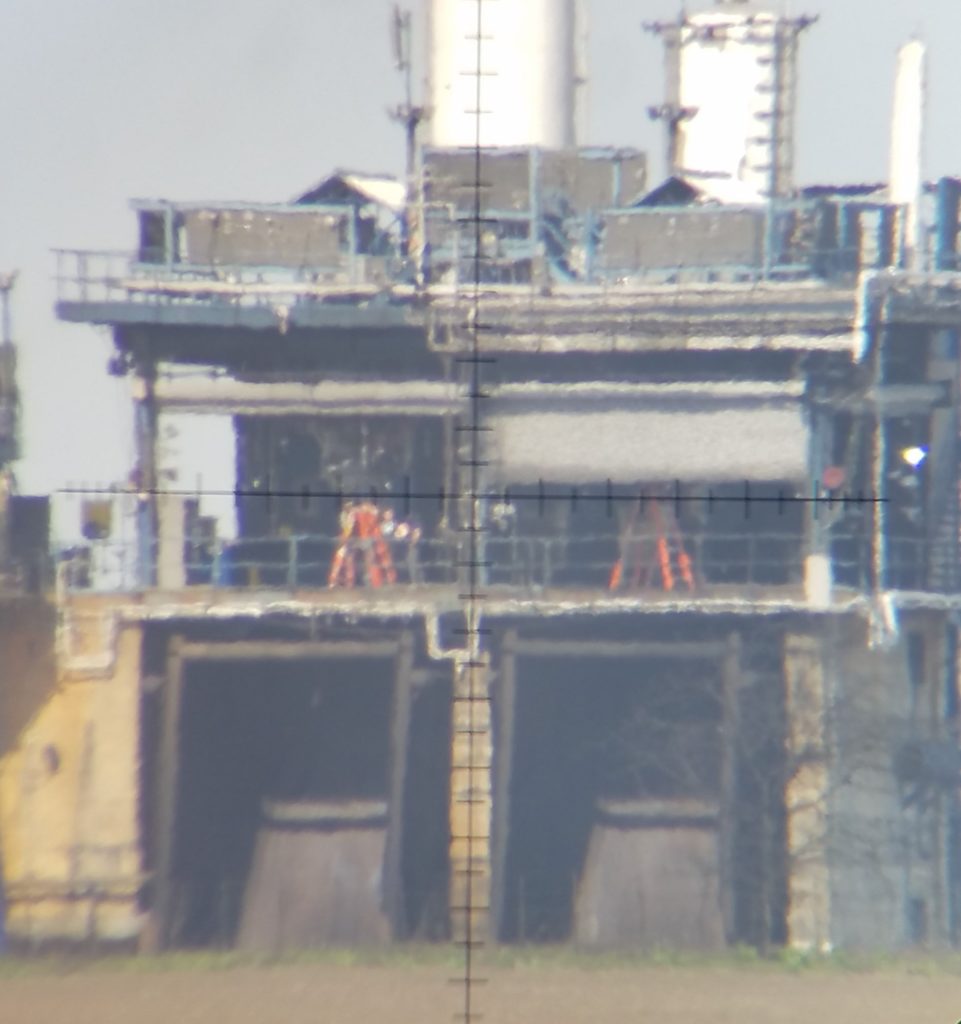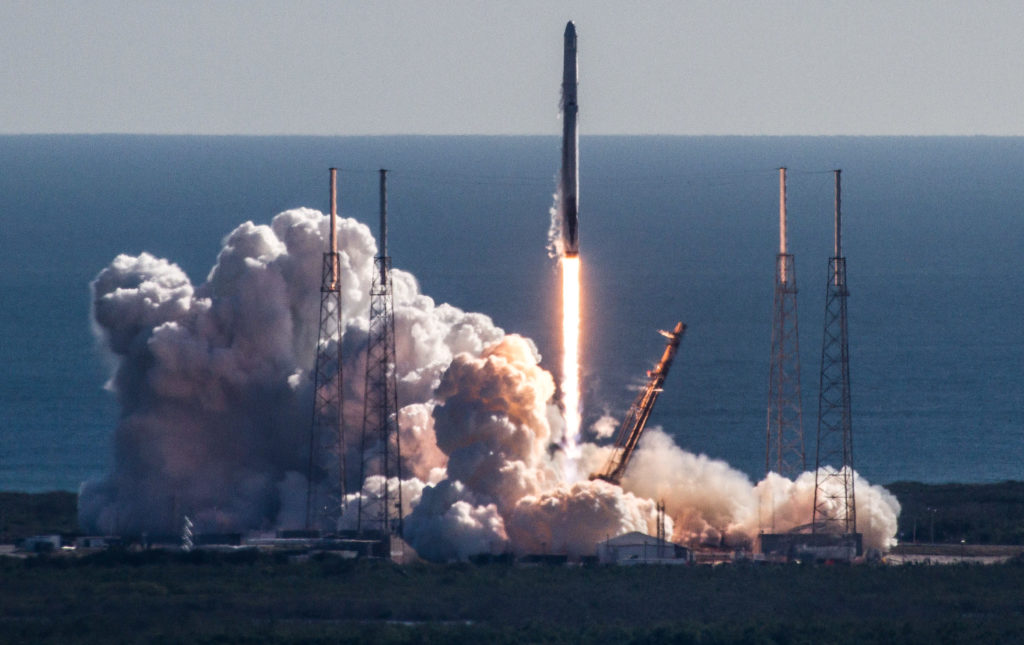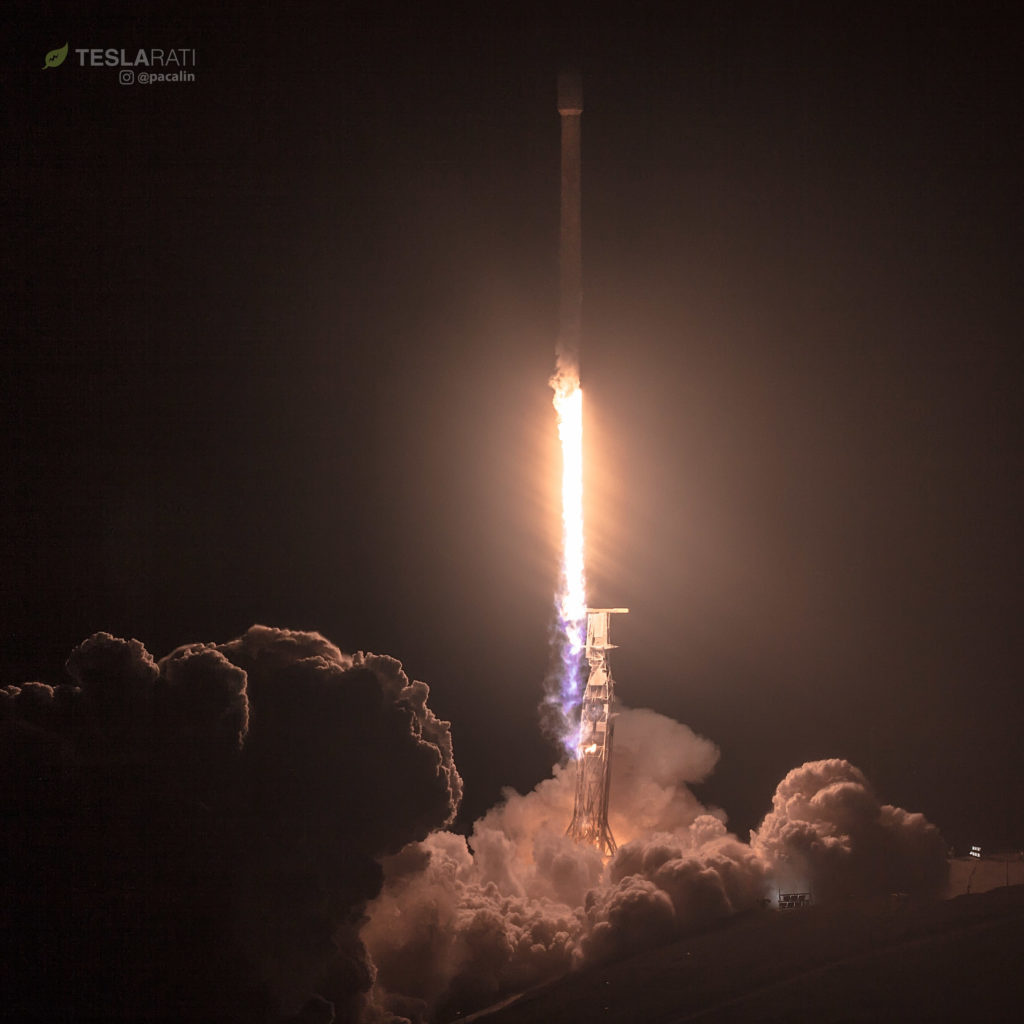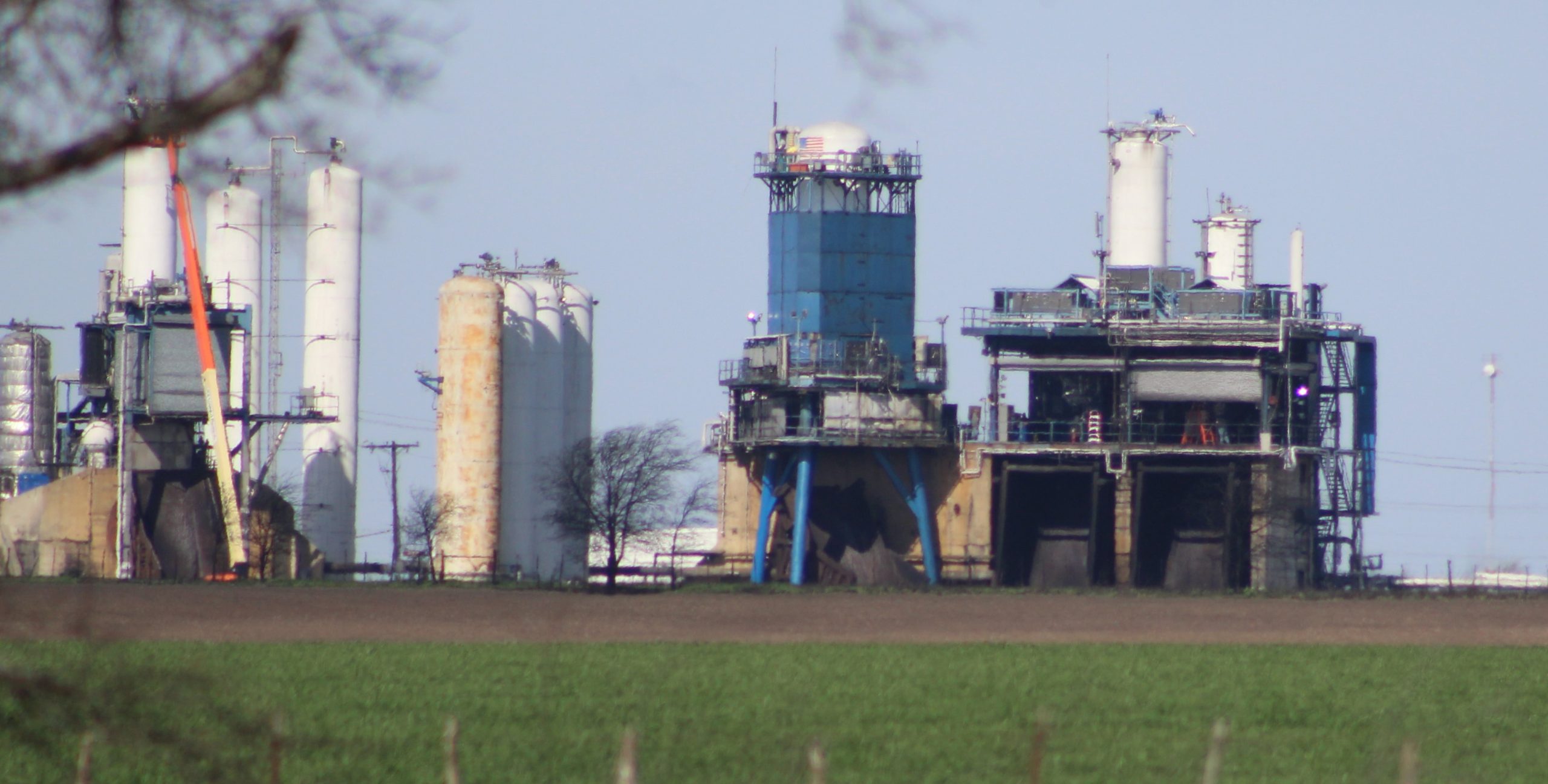
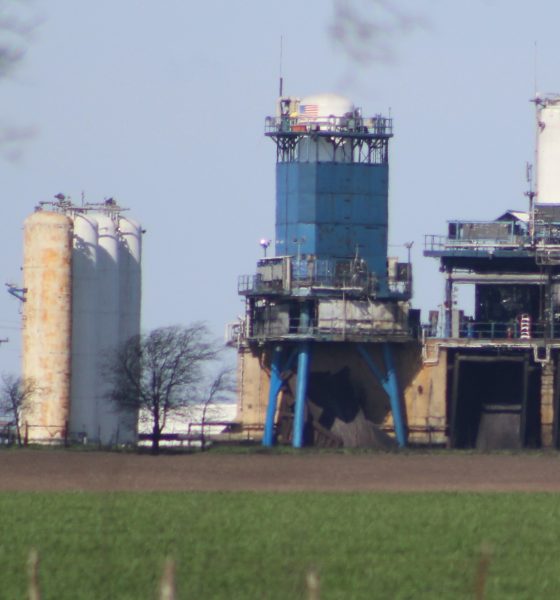
SpaceX
SpaceX’s next-gen Falcon 9 spied continuing tests in Texas
Awaiting the first static fire of SpaceX’s newest upgraded Falcon 9, known as Block 5, local observers and SpaceX fans alike have been on high alert ever since the first booster (B1046) went vertical at the company’s McGregor, TX facilities on Feb. 26.
Preparing for a suite of tests ahead of its inaugural launch from Florida’s Kennedy Space Center, B1046 has been quiet in Texas for much longer than most Falcon hardware. Much like the additional static fires they complete at SpaceX’s launch facilities, boosters are meant to spend less than a week or two on the static fire test stand in McGregor – several days to set up, a few days to complete the static fire, and several days to validate the data gathered and ensure that the hardware is still healthy. 1046, however, has remained vertical at the TX test stand for a bit more than three weeks, and only appears to have ignited once for very brief (~1s) firing around two weeks ago.
- SpaceX’s first Block 5 Falcon 9 seen vertical at the company’s McGregor, TX testing facilities on March 20. (Reddit /u/HollywoodSX)
- SpaceX’s individual Merlin test stands (three are pictured) continue their busy work of testing all Merlin engines. (Reddit /u/HollywoodSX)
- SpaceX technicians can be seen preparing Merlin 1Ds for static fire testing. (Reddit /u/HollywoodSX)
According to photos taken by Reddit user HollywoodSX, the booster is still vertical at the stand as of March 20, and is now sporting what looks like an odd splotch above its relocated “SpaceX” logo. At this point, it can be assumed that SpaceX is cautious with significantly new Falcon 9 hardware, carefully testing a booster with fairly new structures, heat-shielding, Merlin 1Ds, and an array of additional refinements.
Perhaps the first static fire attempt was scrubbed prematurely; perhaps it was intentionally brief to check out startup parameters for all nine Merlins; or perhaps it began as a wet dress rehearsal (propellant loading test) that proceeded into an ignition test. More probably, however, the first routine static fire attempt likely uncovered some minor bugs in the booster’s new hardware or design, signified by the fact that B1046 appears to have remained vertical for the entire interim period. Had serious problems been uncovered, the rocket would have been brought horizontal and taken inside SpaceX’s on-site facilities for in-depth analysis, disassembly, and repairs or modifications.
https://www.instagram.com/p/BgfboKIB17H/
Moreover, SpaceX shipped another Falcon 9 booster out of its Hawthorne, CA factory on Monday, March 19. Barring something far outside the norm, the above booster is almost certainly B1047, better known as the second-ever Block 5 first stage. 1047’s shipment would all but guarantee that 1046’s testing is progressing largely as planned. If there were, in fact, major issues with the rocket leading to unplanned delays, 1047 would almost certainly remain at SpaceX’s Hawthorne factory until the problems with the booster in McGregor could be properly characterized. If repairs or modifications had to occur, Hawthorne is a far more convenient and optimal environment to complete them, and delaying shipment would also avoid unnecessarily taking the risk and wasting the week or so it takes to prepare and ship the rocket cross-country.
All things considered, Block 5’s inaugural flight appears to be moving forward slowly but surely, and anyone with interest in aerospace is eagerly awaiting its first flights. As of March 18, the satellite – Bangabandhu-1 – is still in France, awaiting confirmation from SpaceX of T-15 days to launch before shipping out to Florida. Tentatively scheduled for launch NET April 5, that date would appear to need SpaceX’s confirmation today – any later and the launch is likely to be delayed equivalently.
- Falcon 9 1035 and its Dragon cargo roar away from LC-40 on their second trips to space. (Tom Cross)
- Falcon 9 roars into the dark California sky with PAZ and Starlink. (Pauline Acalin)
Up next for SpaceX is the fifth launch for Iridium Communications, NET March 29 from California. Days later, SpaceX’s next reused Cargo Dragon mission (CRS-14) is scheduled to lift off from SpaceX’s Florida LC-40 pad on April 2. Both launches will feature sooty, flight-proven Falcon 9 boosters and will be covered live by Teslarati’s photographers Pauline Acalin and Tom Cross.
Follow us for live updates, behind-the-scenes sneak peeks, and a sea of beautiful photos from our East and West coast photographers.
Teslarati – Instagram – Twitter
Tom Cross – Twitter
Pauline Acalin – Twitter
Eric Ralph – Twitter

Elon Musk
Starlink achieves major milestones in 2025 progress report
Starlink wrapped up 2025 with impressive growth, adding more than 4.6 million new active customers and expanding service to 35 additional countries, territories, and markets.

Starlink wrapped up 2025 with impressive growth, adding more than 4.6 million new active customers and expanding service to 35 additional countries, territories, and markets. The company also completed deployment of its first-generation Direct to Cell constellation, launching over 650 satellites in just 18 months to enable cellular connectivity.
SpaceX highlighted Starlink’s impressive 2025 progress in an extensive report.
Key achievements from Starlink’s 2025 Progress
Starlink connected over 4.6 million new customers with high-speed internet while bringing service to 35 more regions worldwide in 2025. Starlink is now connecting 9.2 million people worldwide. The service achieved this just weeks after hitting its 8 million customer milestone.
Starlink is now available in 155 markets, including areas that are unreachable by traditional ISPs. As per SpaceX, Starlink has also provided over 21 million airline passengers and 20 million cruise passengers with reliable high-speed internet connectivity during their travels.
Starlink Direct to Cell
Starlink’s Direct to Cell constellation, more than 650 satellites strong, has already connected over 12 million people at least once, marking a breakthrough in global mobile coverage.
Starlink Direct to Cell is currently rolled out to 22 countries and 6 continents, with over 6 million monthly customers. Starlink Direct to Cell also has 27 MNO partners to date.
“This year, SpaceX completed deployment of the first generation of the Starlink Direct to Cell constellation, with more than 650 satellites launched to low-Earth orbit in just 18 months. Starlink Direct to Cell has connected more than 12 million people, and counting, at least once, providing life-saving connectivity when people need it most,” SpaceX wrote.
Elon Musk
Starlink passes 9 million active customers just weeks after hitting 8 million
The milestone highlights the accelerating growth of Starlink, which has now been adding over 20,000 new users per day.

SpaceX’s Starlink satellite internet service has continued its rapid global expansion, surpassing 9 million active customers just weeks after crossing the 8 million mark.
The milestone highlights the accelerating growth of Starlink, which has now been adding over 20,000 new users per day.
9 million customers
In a post on X, SpaceX stated that Starlink now serves over 9 million active users across 155 countries, territories, and markets. The company reached 8 million customers in early November, meaning it added roughly 1 million subscribers in under seven weeks, or about 21,275 new users on average per day.
“Starlink is connecting more than 9M active customers with high-speed internet across 155 countries, territories, and many other markets,” Starlink wrote in a post on its official X account. SpaceX President Gwynne Shotwell also celebrated the milestone on X. “A huge thank you to all of our customers and congrats to the Starlink team for such an incredible product,” she wrote.
That growth rate reflects both rising demand for broadband in underserved regions and Starlink’s expanding satellite constellation, which now includes more than 9,000 low-Earth-orbit satellites designed to deliver high-speed, low-latency internet worldwide.
Starlink’s momentum
Starlink’s momentum has been building up. SpaceX reported 4.6 million Starlink customers in December 2024, followed by 7 million by August 2025, and 8 million customers in November. Independent data also suggests Starlink usage is rising sharply, with Cloudflare reporting that global web traffic from Starlink users more than doubled in 2025, as noted in an Insider report.
Starlink’s momentum is increasingly tied to SpaceX’s broader financial outlook. Elon Musk has said the satellite network is “by far” the company’s largest revenue driver, and reports suggest SpaceX may be positioning itself for an initial public offering as soon as next year, with valuations estimated as high as $1.5 trillion. Musk has also suggested in the past that Starlink could have its own IPO in the future.
News
SpaceX shades airline for seeking contract with Amazon’s Starlink rival

SpaceX employees, including its CEO Elon Musk, shaded American Airlines on social media this past weekend due to the company’s reported talks with Amazon’s Starlink rival, Leo.
Starlink has been adopted by several airlines, including United Airlines, Qatar Airways, Hawaiian Airlines, WestJet, Air France, airBaltic, and others. It has gained notoriety as an extremely solid, dependable, and reliable option for airline travel, as traditional options frequently cause users to lose connection to the internet.
Many airlines have made the switch, while others continue to mull the options available to them. American Airlines is one of them.
A report from Bloomberg indicates the airline is thinking of going with a Starlink rival owned by Amazon, called Leo. It was previously referred to as Project Kuiper.
American CEO Robert Isom said (via Bloomberg):
“While there’s Starlink, there are other low-Earth-orbit satellite opportunities that we can look at. We’re making sure that American is going to have what our customers need.”
Isom also said American has been in touch with Amazon about installing Leo on its aircraft, but he would not reveal the status of any discussions with the company.
The report caught the attention of Michael Nicolls, the Vice President of Starlink Engineering at SpaceX, who said:
“Only fly on airlines with good connectivity… and only one source of good connectivity at the moment…”
CEO Elon Musk replied to Nicolls by stating that American Airlines risks losing “a lot of customers if their connectivity solution fails.”
American Airlines will lose a lot of customers if their connectivity solution fails
— Elon Musk (@elonmusk) December 14, 2025
There are over 8,000 Starlink satellites in orbit currently, offering internet coverage in over 150 countries and territories globally. SpaceX expands its array of satellites nearly every week with launches from California and Florida, aiming to offer internet access to everyone across the globe.
Currently, the company is focusing on expanding into new markets, such as Africa and Asia.
